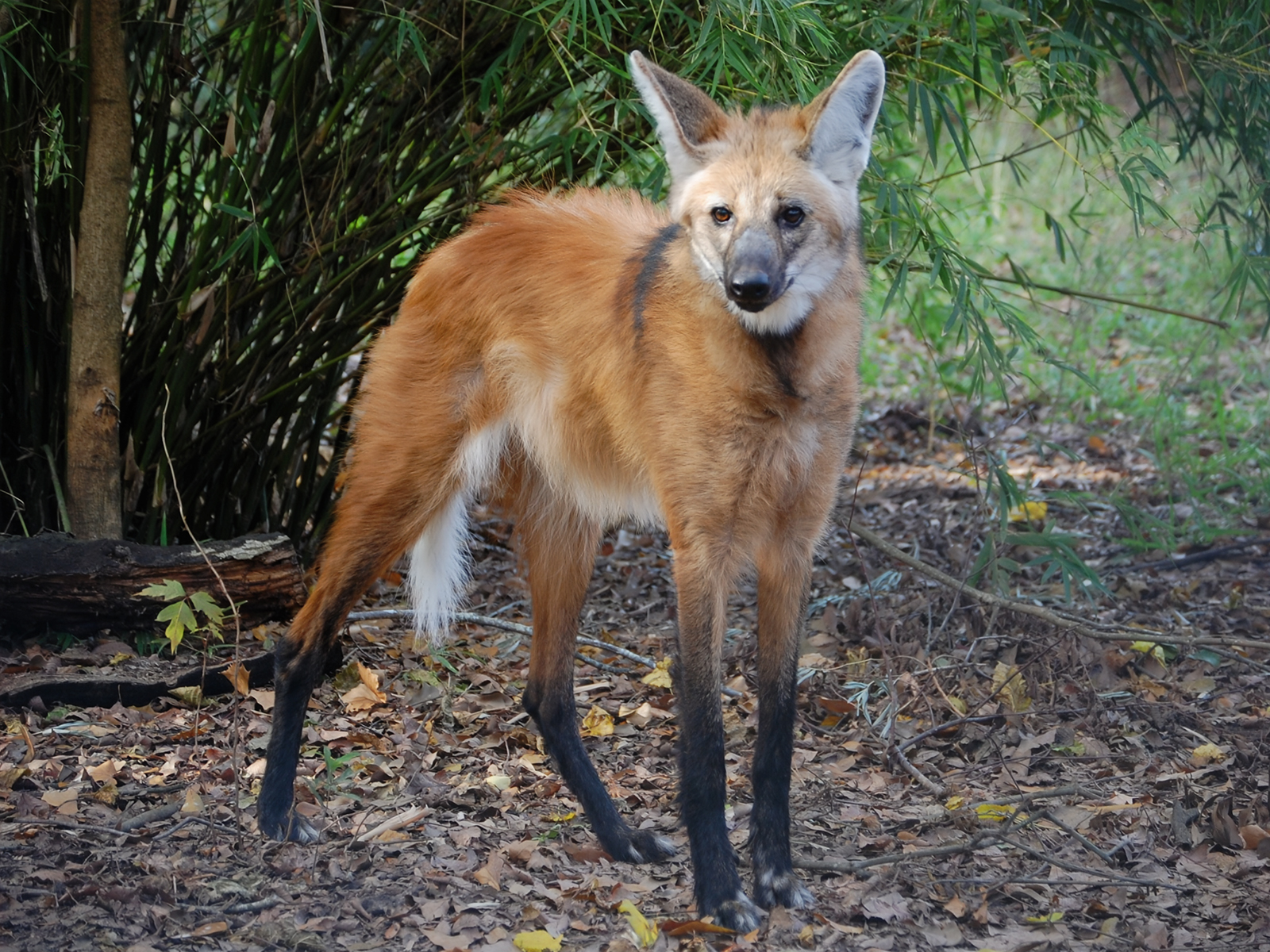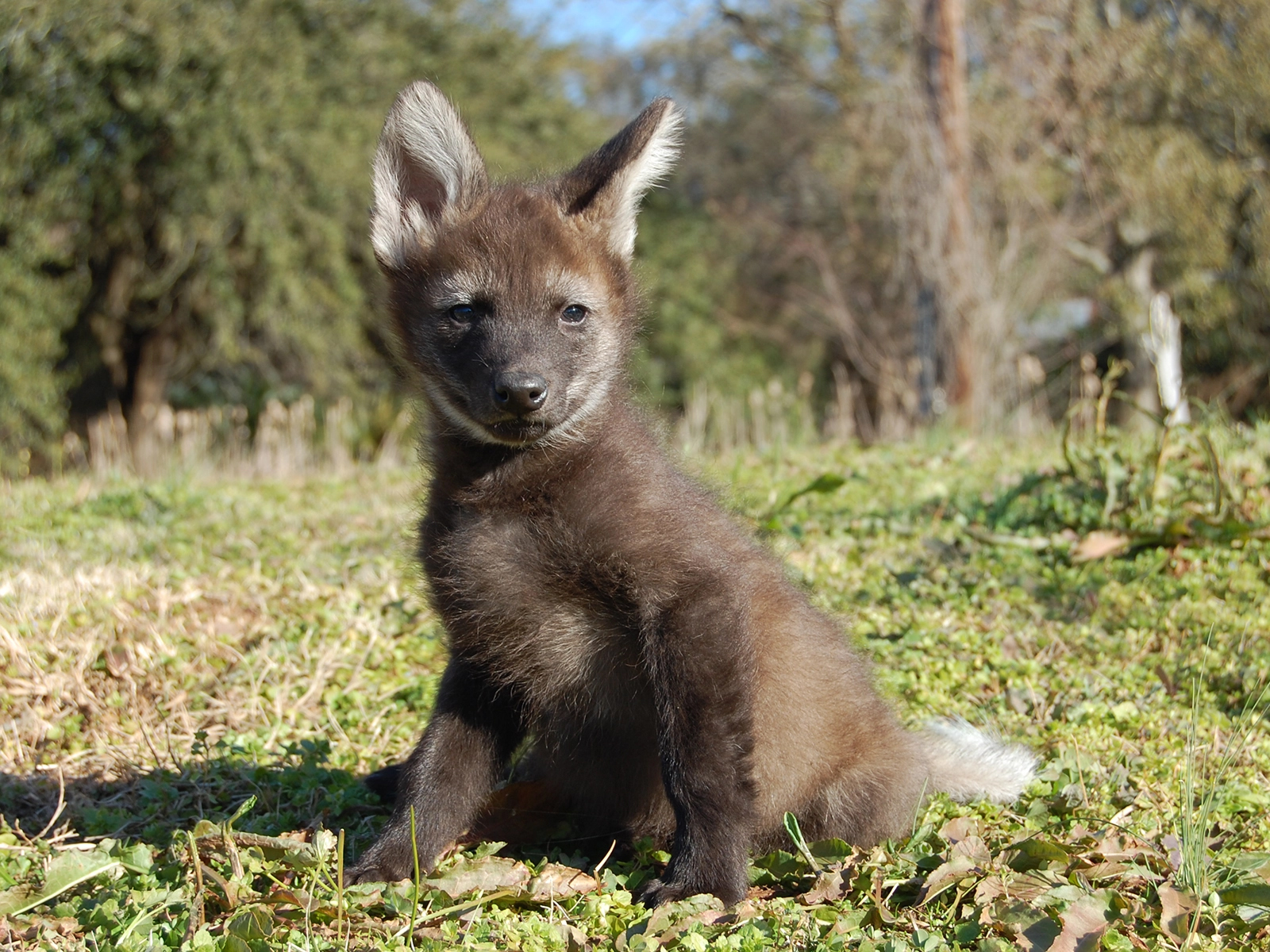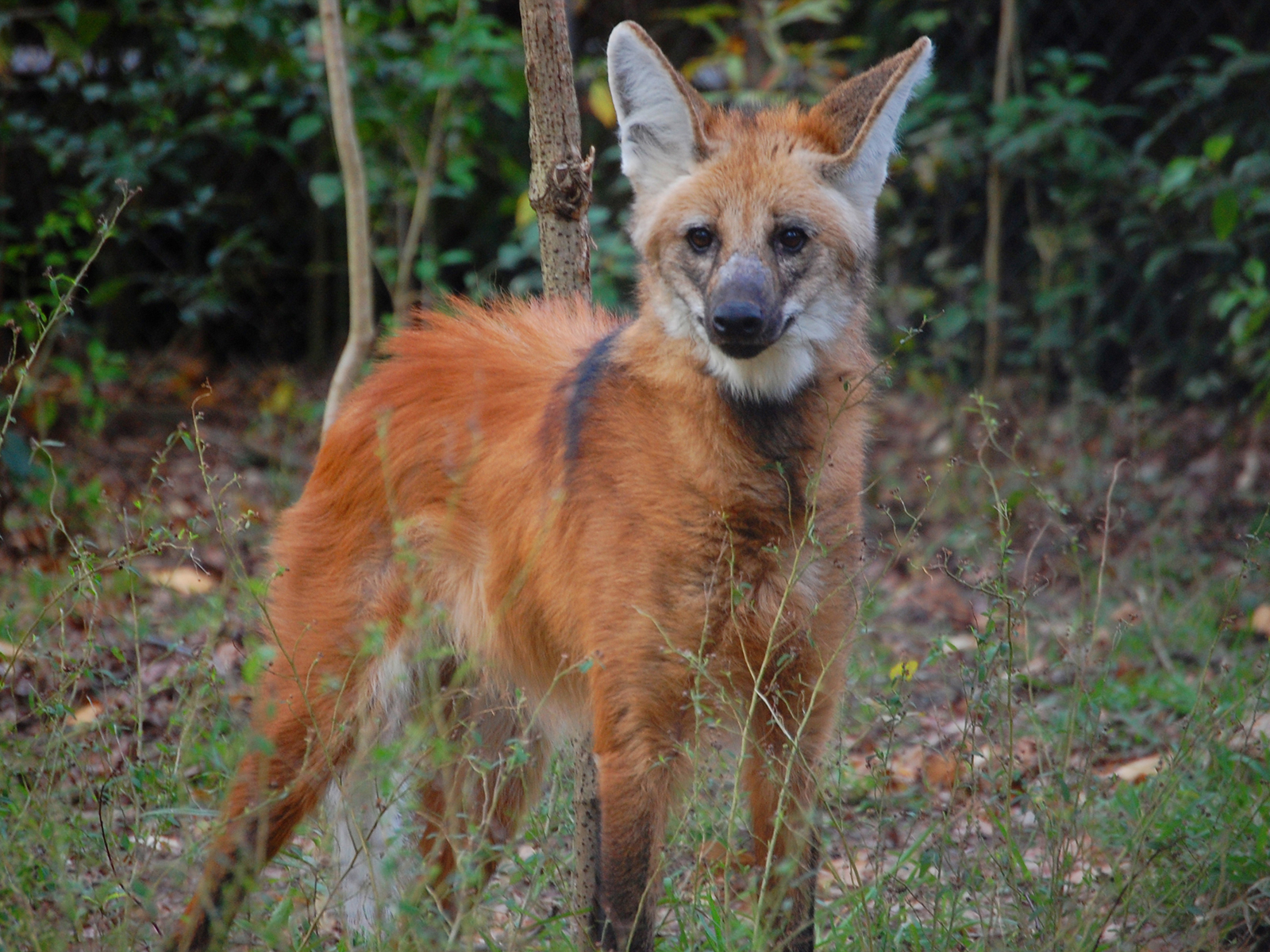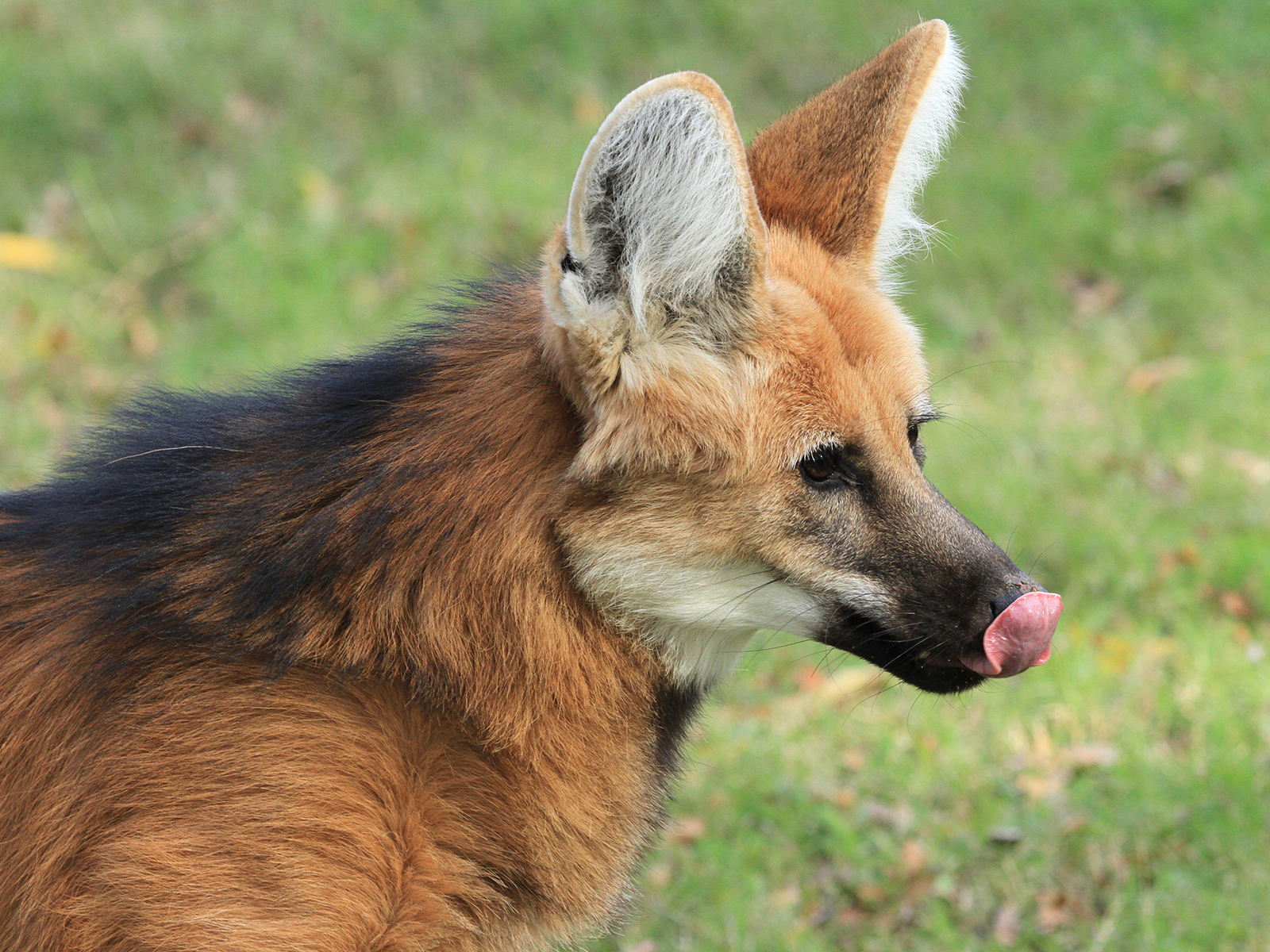Maned Wolf
Chrysocyon brachyurus
Class
Mammalia
Order
Carnivora
Family
Canidae

Mammalia
Carnivora
Canidae
Central and southeastern Brazil, Paraguay, eastern Bolivia, and northern Argentina
Height: 2 -3 ft (at shoulder)
Length: 3 - 4 ft
Weight: Up to 50 lbs
Open forest, savanna, and marshland
1 - 5 pups
Gestation: 55 - 65 days
Smalll mammals, insects, reptiles, birds, bird eggs, fruits, and vegetation
Near Threatened
However, they are not related to foxes or members of the wolf family. They are in their own unique genus of species.

Maned wolves are largest canid in South America. Their long legs enable them to see above the tall grass, which helps them hunt for food and avoid predators. Maned wolves are unique in that they will eat both plant and animal matter.

The maned wolf's urine has a strong distinctive smell similar to skunk spray. Maned wolves mark their territory with scent glands, as well as urine and feces deposited around the perimeter. Instead of howling, maned wolves communicate with their mates and warn off rivals by making a distinctive loud bark.

At birth, the pups weigh around 13 ounces. Their eyes and ears open by day nine. By week four, their ears stand upright, and they will take regurgitated food. Their coat changes from black to red by week 10, and they are weaned by 15 weeks. Pups generally leave the parents' territory at one year of age.


The most significant threat to their population is the drastic reduction of habitat, especially due to conversion to agricultural land. They are also victim to roadway mortality.
Domestic dogs compete with maned wolves for food, spread diseases, and may even pursue and kill them. Humans kill these wolves for their body parts, believed to have magical properties.
Raise awareness about habitat loss. The primary threat to maned wolves is the destruction of their natural habitat, the Cerrado grasslands, due to the expansion of industrial agriculture and factory farming. Educating others about this issue can help build pressure for more sustainable practices.
Support sustainable farming. Look for and support products from farms that do not contribute to deforestation of the Cerrado.
Donate to FOTAZ. Friends of the Alexandria Zoo contributes funds each year to Zoo Conservation Outreach Group (ZCOG), a non-profit coalition of zoos, aquariums, and related partners committed to promoting wildlife and habitat conservation throughout the Americas.
Francisca: Born Nov 27, 2018
Oceano: Born Dec 23, 2017
